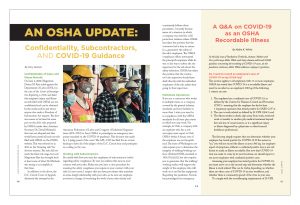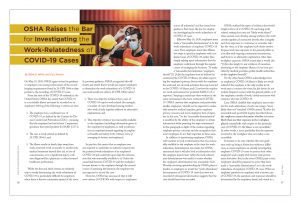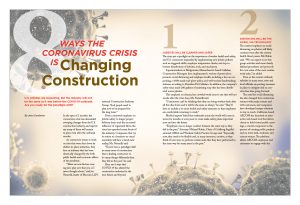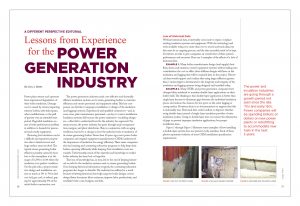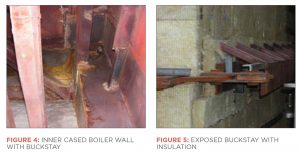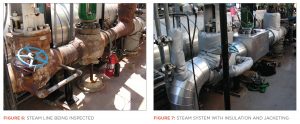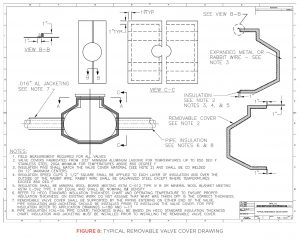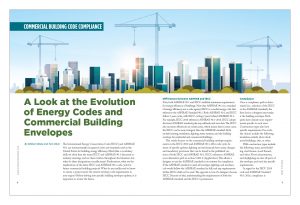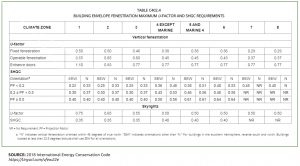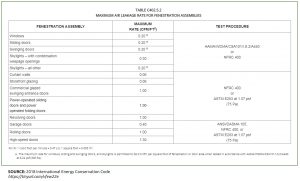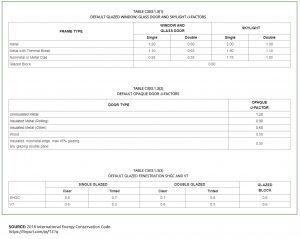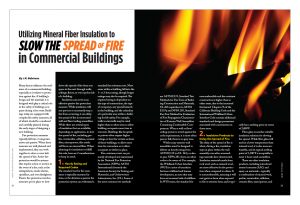Confidentiality of Injury and Illness Records
On June 4, 2020, Magistrate Donna M. Ryu ruled against the Department of Labor (DOL) in the case of the Center of Investigative Reporting v. DOL and held that employer injury and illness records filed with OSHA are not confidential and can be obtained by the media and/or just about anyone else under a Freedom of Information Act request. The decision seems to be based in some part on the 2016 rule proposed by OSHA (under then Assistant Secretary Dr. David Michaels) that was not adopted and that would have posted all such records filed with OSHA on the OSHA website. This was referred to in 2016 as the “shaming rule” for obvious reasons. The rule did not reach the final rule stage, but now Magistrate Ryu has brought back at least some of what Dr. Michaels was trying to accomplish at
that time.
In addition to the above, the D.C. Circuit Court of Appeals dismissed the attempt by the American Federation of Labor and Congress of Industrial Organizations (AFL-CIO) to force OSHA to promulgate an emergency temporary standard on the COVID-19 pandemic. This decision was made by a 3-judge panel of the court. The AFL-CIO has filed for an en banc hearing to have all of the judges of the D.C. Circuit hear and participate in a ruling on the case.
Working with Subcontractors
Be careful with how you treat the employees of subcontractors (subs) regarding safety compliance. Be sure you address this issue in your contract with your subs. Make sure you have a clear procedure for ensuring the safety compliance you require in your contract with your subs. In most cases, I suspect that you have procedures that maintain an arms-length relationship with your subs, so be sure any employee you have in charge of overseeing the work of your subs strictly and consistently follows those procedures. I recently became aware of a situation in which a company was cited for a fall protection violation where OSHA has taken the position that the contractor had a duty to ensure (i.e., guarantee) the safety of the sub’s employees. The OSHA compliance officer intercepted the principal’s employee while he was on his way to advise the site supervisor for the sub about the safety infraction. OSHA has taken the position that the contractor’s site supervisor should have dealt directly with the individual employees of the sub, rather than going to their supervisor.
Multistate Operations
If you are a contractor who works in multiple states, or a company covered by the general industry standards and have facilities in more than 1 state, you must be in compliance with the OSHA standards for all state-plan states in which you may work. For example, in Utah, a company with an employee who has a serious injury must report to Utah OSHA within 8 hours, even if the employee was not hospitalized. The state of Washington not only requires you to determine the integrity of walking/working surfaces (Federal OSHA standard at 1926.501(a)(2)), but also requires you to guarantee that the walking/working surface will support the weight of the employee who will work on it and his/her equipment. Regarding the pandemic, Nevada has promulgated an emergency temporary standard limiting the number of employees in an aerial lift, scissors lift, or JLG basket to 1 person.
In summary, remember that you are not just bound to the safety regulations in the state in which you are headquartered or in which you have your principal facility, but also to those in other states to which you send employees or in which you open new facilities.
COVID-19 Guidance
In the absence of a temporary emergency OSHA standard relating to COVID-19, OSHA continues to issue guidance and enforce safety and health practices under the general duty clause. OSHA issued more guidance for construction contractors in June, advising employers to perform a job hazard analysis (JHA) at the beginning of each work day to determine whether the work for the upcoming day will place them in the lower, medium, or high risk category, and then act appropriately with engineering and/or administrative controls. I recently heard comments from a New England federal OSHA compliance officer that he expects the construction company to reevaluate its work, as far as exposure potential, throughout the day, and adjust safeguards appropriately. The implication here is that whenever conditions on the site change in any way, a new JHA should be performed.
OSHA has defined lower risk for construction as work that allows workers to remain 6 feet apart with little contact with the public. Medium risk work requires workers to be within 6 feet of each other and with customers, visitors, and the public. High risk are those sites occupied by other workers, customers, or residents suspected or known to have COVID-19. In the guidance, OSHA lists engineering controls such as closing doors whenever possible or erecting barriers such as plastic sheeting. OSHA recommends that employers continually reassess these barriers. For administrative controls, employers should follow CDC guidance and train employees on the spread of the disease.
Recommended training is extensive. It includes such things as training employees to recognize the signs and symptoms of COVID-19, and how the disease is spread. You should also train employees in all policies and procedures applicable to the employee’s duties, and provide information on social distancing and personal protective equipment. Remind employees to stay home if sick, how to properly wear face coverings, and how to use Environmental Protection Agency-approved cleaning chemicals. As with all other safety issues, you need to determine how to apply your progressive safety program to COVID-19 pandemic issues.
The above measures are what OSHA considers to be “feasible” recommendations or guidance. For OSHA to allege a violation of the general duty clause, it must prove that an employer did not implement feasible work practices, administrative controls, and engineering controls. So, if you determine that any of this guidance is not feasible or creates a greater hazard, you should document the analysis that led to your conclusion in case you are cited for a general duty clause violation. An example of greater hazard might be an increased risk of a heat-related illness created by requiring employees to wear face coverings in a high or extremely high heat index environment.
As you can see, even though we do not have an emergency temporary standard from federal OSHA, we can see that we are dealing with an ever-changing landscape.
Copyright statement
This article was published in the August 2020 issue of Insulation Outlook magazine. Copyright © 2020 National Insulation Association. All rights reserved. The contents of this website and Insulation Outlook magazine may not be reproduced in any means, in whole or in part, without the prior written permission of the publisher and NIA. Any unauthorized duplication is strictly prohibited and would violate NIA’s copyright and may violate other copyright agreements that NIA has with authors and partners. Contact publisher@insulation.org to reprint or reproduce this content.
Disclaimer: Unless specifically noted at the beginning of the article, the content, calculations, and opinions expressed by the author(s) of any article in Insulation Outlook are those of the author(s) and do not necessarily reflect the views of NIA. The appearance of an article, advertisement, and/or product or service information in Insulation Outlook does not constitute an endorsement of such products or services by NIA. Every effort will be made to avoid the use or mention of specific product brand names in featured magazine articles.

